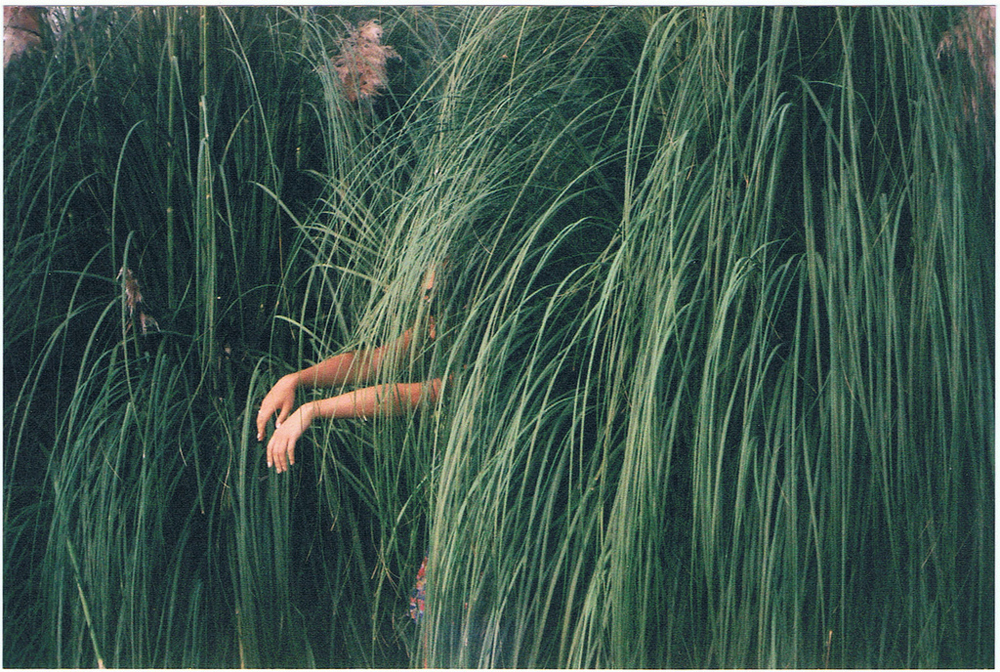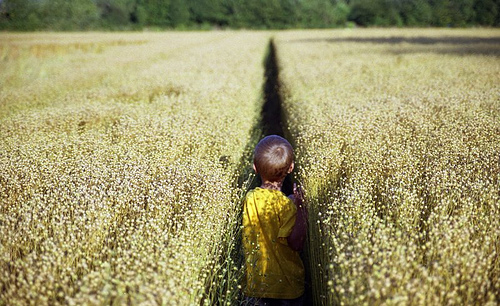The follow are from Diane Eshini Rizzetto’s magical Waking Up To What You Do (Shambhala Publications, 2005)
Monastics
The Buddhist precepts came about originally as rules to govern the community of monks and nuns… they included very precise instructions such as not handling money, not eating certain foods, and were intended to support monastic practice.
The precepts are pointers, directing us toward our natural propensity to take action out of love and concern for one another. They direct us toward considering what conditions are present here and now.
Only Me
The precepts encourage us in the spirit of open questioning to unveil our deepest beliefs that define for us the shape and limitations of how we view who we are. They remind us that our actions are sometimes fueled by the desire to serve only ourselves, often at the expense of others. They reveal that our happiness and well-being are connected to the happiness and well-being of others.
They are never intended for us to view unskillful actions as moral defects, but rather as the roots of suffering.
Dream of Self
Our intention in receiving the precepts is not just to bring awareness to behavior but to explore who we think we are.
Working with the precepts is a spiraling process that begins by observing our behavior through the lens of a precept, then circles its way into a deeper understanding of our reactionary patterns, and the beliefs that fuel them. These beliefs are the projections of our identity, the dream of the self.
When we are caught up in our habitual patterns of belief and assumptions, we are caught in a dream of self. The self is none other than our beliefs and assumptions. The way to arouse ourselves from this dream is to hear the wake-up calls in the most ordinary, everyday events.
Practising the Precepts
One of my students noticed that when she gossiped she felt puffed up like a bird conserving its heat. She was surprised that it made her feel physically taller and bigger. She also noticed a rush of heat in her chest as she began to speak. She felt more engaged and noticed a glimmer of an I am better thought. This is just one type of sensory reaction that one might notice. Another student reported that he felt as if he had put up a shield of armour. He observed rigidity, anger, and hardness whenever he sensed his self-image threatened. I suggested that students carry this expanded awareness into all their dailiy activities, from waking to sleeping. The intention is to be awake to actions around a specific precept, whenever we find ourselves swinging into reaction. One person did the following practice with the precept “I take up the way of meeting others on equal ground.” Every time he found himself in a group of three people or more, he would look at each person and ask himself: How does the self measure itself in relation to this person? He would not only take note of what thoughts arose – I’m smarter, quicker, not as popular – but also would bring attention to the bodily sensation associated with the thought and any emotions that were present.
Every time I sat with a group of people I would go around the room – person by person – and observe how I experience myself in relation to that person. What I realized was that I experienced myself as better than or less than, the practice put me at the centre, of what everyone else was doing. (It makes you the yardstick by which everyone is measured.)
Barbara Kingsolver: Look life in the eye and love it back.
A good way to begin exploring this precept is to pick one substance or activity that you regularly engage in with some attachment (in other words, you’d have some reaction if you couldn’t do it) and begin observing yourself internally while using or engaging that activity.
The idea here isn’t abstinence but exploration. What does craving feel like? Get to know your escape.
Our brains are drug factories producing thousands of substances that course through our bodies regulating our moods and behaviours.
At any moment you can note that you are about to engage a precept. It takes patience to coax our beliefs out of hiding, and it takes courage to look into the places we’ve kept in the dark. What we are looking for is the reaction shot.
Our reactions often arise out of our beliefs about the way we think we/others need to be. We might call these: beliefs or requirements. I/you should be understanding. I/you should be self sufficient. Requirements aren’t something we consciously choose. Utilizing this kind of probing can reveal the blueprint of the self-centered dream in which we view the world as we think it should be, rather than how it is. Requirements are like coloured glasses through which we view experience. The practice encourages us to feel the glasses, perhaps remove them. When we do, we come face to face with what we are trying to avoid. Often when one of our requirements is not being met, that’s when we break a precept.
The precepts invite us to ask two questions: how do I think he/she/the situation should be? How is it? The should reveals our requirements.
To know our intention we need to know our hiding places. What we name as unbearable are energy patterns in body/mind. We can come to know intimately the many subtle ways we intentionally deceive in an attempt to escape deeply held assumptions about our identity – our dream of self.
Every time we open our mouth to speak, we have strayed into deception because we have attempted to speak something that cannot be communicated. Yet communication is inescapable.
Who are your victims?
One cannot deny the humanity of another without diminishing one’s own; in the face of one’s victim one sees oneself.
More and Less
We rarely accept ourselves as we are until we can open to ourselves fully. We can never hope to view others as they are. We will always see them as less than or more than. What am I adding into the information I am conveying?
An indigenous tribe in Tasmania has an interesting community ritual. When someone behaves unskillfully, the group comes together around the fire to reenact the situation… Members of the tribe roleplay the scene in a light-hearted way.
Infinite Apple
The apple I had with lunch came about because of the seed within its core, the design in its genetic structure. Together with the soil, water and sun, apple comes into shape – round, red, tart, and juicy. How it finds its way into my mouth comes about because of the hand that picked it from the tree, the truck that was driven to the supermarket, and on and on.
Resent
When I feel resentment I haven’t given over to doing what needs to be done. There’s a sense of holding back. The hands are really measuring. The hands move without the heart.
He realized that under his addiction from the beginning… he was not simply trying to alter his experience , thus avoiding the fear and anger that were cultivated early in his life; by altering his experience he believed he was controlling what he felt helpless to face. (This became his new teacher. Even after years of counseling, this teacher wasn’t finished with him.) The addiction is the requirement – not the drugs.
Not Stealing
The precept of not taking what isn’t freely given invites us to consider deeply what/how we ask or don’t ask for whatever we need, how we give or don’t offer what we are capable of giving. It then leads us into a deeper inquiry into lacking and deserving – beliefs that we require and deserve more than what we have. This precept directs us to the door marked “Getting Something.” It encourages us to meet the beliefs, assumptions, and habitual thought patterns behind that door that fuel our insistence on getting what we want, the mind of attainment.
Sometimes working with this precept relates to an unwillingness to receive what may be offered freely. How many of us shy away from accepting thanks, love, intimacy, help from someone who really offers it?
Stealing
I steal and demand other people’s judgments of my behavior by demanding from them what I can only realize for myself? I can avoid my feelings by paying attention to other’s opinions rather than observing my own actions and emotions. (I call myself dumb hoping that you will correct and call me smart. Stealing can come via manipulation.)
Not Killing
To study the precept of not killing we drink the whole glass of water – the killer, the victim, their respective families and friends. We drink the grandeur of the tree as it was before it was turned into my kitchen table.
Anger
To take tea with outrage or confusion, to see it eye to eye, we learn about relating to instead of from anger. To spot the difference between self-centered and world-centered anger (anger that is a genuine response to support life)
Not hanging onto anger, not pushing it away, we can learn how to identify the patterns of our thinking and the body’s reactions when it comes. Its nature is like a flame that burns bright and disappears. Anger: its mask of power covers fear and powerlessness.
When we measure our well-being by the extent to which we maintain our requirements about the way we need to be or the world needs to be, then we are likely to be disappointed, even angry. We hold onto anger to maintain our identity or dream of self.
Sometimes people know they’re angry but don’t have a feeling in their body. Be patient. It can take time to connect thoughts to body sensations, especially if our style is to spin in our thoughts. The practice is an invitation to feel, inviting whatever comes to reveal itself. In time you’ll notice that whatever you experience is just a passing wave of energy.
The anger against my mother was a reaction to a more deeply seated requirement that I be treated in a certain way. When that didn’t happen, I was hurt and frightened. Anger arose as armor to protect me from that pain.
The most helpful way to work with this precept is not by trying to get rid of anger, but to watch what happens when anger arises. What is revealed there are your secret requirements, our stubborn insistence that life follows our agenda.
Monk Story
Once there was a samurai who wanted to master the realms of heaven and hell. He made his way to an old and frail monk who lived high in the mountains and who was renowned for his great understanding. Reaching the hut tired and cold, the samurai barged his way through the door and demanded something warm to eat. Startled, the monk, who had been sitting by the fire sipping tea, quietly put down his teacup and went to fetch some warm food for the samurai. After he had eaten and calmed down a bit, the samurai turned to the old monk and in a gruff voice demanded, “Show me the way to master heaven and hell!”
The old monk again put down his teacup and stood up, barely reaching the samurai’s shoulders. He looked the samurai in the eye and let out a harangue: “What gives you the idea that I’d teach you anything? You’re nothing but a dumb fool. Your breath stinks and your teeth are rotten. You look like you haven’t bathed in months and your speech is vulgar and foolish.”
The samurai’s eyes bulged and his face grew red with fury. He raised his sword above the old monk’s head as if to strike him. His breathing was hard, and he looked as if he would burst. Directly under the shadow of the samurai’s sword, the monk sat down, picked up his teacup, took a sip, and said, “That’s hell.”
Dumbfounded and deeply moved by the old monk’s willingness to risk his life to teach him the meaning of hell so profoundly, the samurai lowered his sword. His heart filled with appreciation and love for the generosity and open heart of this fearless monk. Seeing the samurai’s response, the old monk continued, “And this is heaven.”
Your life will go on. The question is: will you show up?





